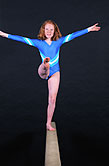
MONDAY, May 2 (HealthDay News) — Kids who focus on one sport to the exclusion of others end up getting injured more often, new research suggests.
In fact, those who devoted themselves to only one athletic pursuit were almost twice as likely to get hurt as those who played multiple sports, said senior study author Dr. Neeru Jayanthi, medical director of primary care sports medicine at Loyola University Chicago Stritch School of Medicine.
“We saw a pretty significant difference with this intensity of training, along with specialization,” said Jayanthi. The findings are slated to be presented Monday at the American Medical Society for Sports Medicine annual meeting in Salt Lake City. Research presented at medical meetings should be viewed as preliminary.
“It’s been accepted for the last five years or so that kids who are not super-specific do better. They’re cross-trained, so they’re conditioned for other movements,” said Dr. Kory Gill, an assistant professor at Texas A&M Health Science Center College of Medicine.
Jayanthi’s team had done research earlier on 519 junior tennis players that found those who only played tennis were more likely to be hurt.
But that was just one sport, and Jayanthi wanted to extend the findings to other athletic activities.
“As a physician, you get frustrated seeing kids come in with injuries that keep them out for two to three months. It’s devastating,” said Jayanthi, who recently saw a young gymnast with a knee injury which will keep her off the mat for at least three months.
Here, the researchers looked at 154 young athletes, average age 13, who played a variety of sports. Eighty-five of the participants came to the clinic for treatment for a sports injury, while 69 were just getting sports physicals.
The investigators then ranked each athlete on how specialized they were, basing the score on such factors as how often they train in one sport (75 percent was considered specialized), whether or not they had given up other sports to concentrate on one, and whether they train eight months a year or compete more than six months a year in one sport.
As it turned out, 60.4 percent of the athletes who had been injured were considered specialized, compared with only 31.3 percent of those who came for physicals.
Kids who came to the clinic with injuries played organized sports an average of 11 hours a week, compared with fewer than nine hours in the uninjured group.
Although the researchers did not specifically look at this, Jayanthi said he has noticed that more highly specialized sports such as tennis, gymnastics and dance tend to be linked to more severe overuse injuries.
Why do the injuries occur?
“One reason is repetitive use of the same muscle group and stressors to growing areas, for example, the spine,” explained Jayanthi, who stressed that the findings were preliminary. His team, in collaboration with Children’s Memorial Hospital in Chicago, plans to enroll more athletes in follow-up research, and those athletes will be evaluated every six months for three years, to look more closely at how intense training can affect a young athlete’s body during growth spurts.
“Second is exposure risk,” he added. “If you’re getting really good at one sport, the intensity increases because you are getting better. People are developing adult-type sports skills in a child’s body. The growing body probably doesn’t tolerate this.”
Younger children — those who have not entered high school — tend to be especially vulnerable as their bodies are still growing, said Gill, who recommended that kids cross-train and condition for other movements, or just play another sport.
“I tell parents to let kids be kids and play multiple sports,” he said. “See what they’re good at and what they enjoy.” By high school, when bodies are more mature, specializing is safer, he added.
More information
For more on high school sports injuries, visit the American Academy of Orthopaedic Surgeons.

